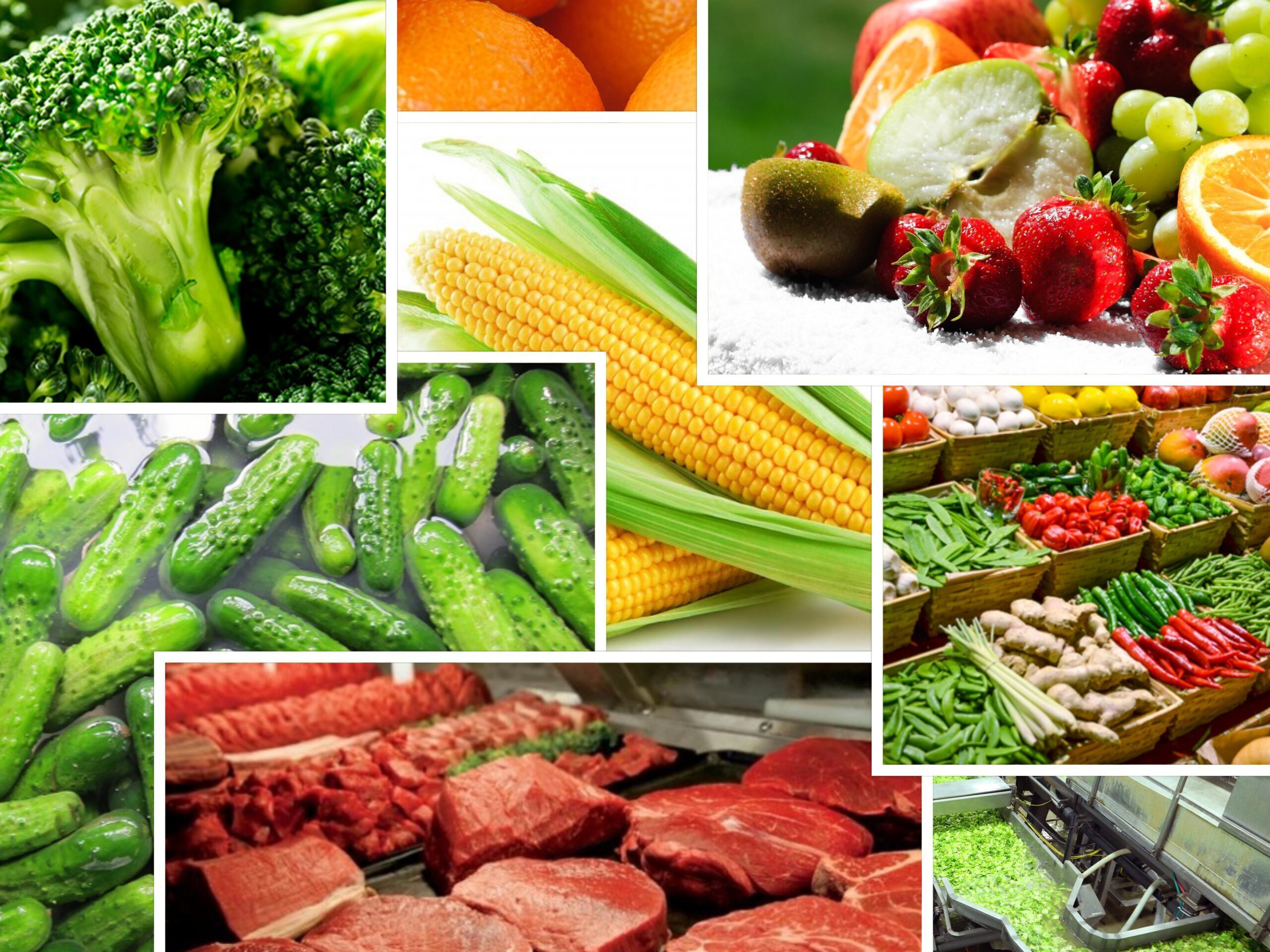Are you curious about the science behind your favorite meals? Have you ever wondered why certain ingredients react the way they do when combined? Welcome to Food Science 101, where we delve into the fascinating world of food. In this exciting exploration, we unravel the mysteries behind the mouthwatering flavors, textures, and aromas that make your taste buds dance. From the Maillard reaction that gives your steak its irresistible crust to the emulsification process that creates silky smooth sauces, we uncover the secrets behind these culinary wonders. Join us as we unlock the science behind the perfect chocolate chip cookie, the art of fermenting foods, and the chemistry of baking that transforms simple ingredients into delectable masterpieces. Whether you’re a food enthusiast or a professional chef, this captivating journey into the world of food science will leave you with a deeper appreciation for the foods that excite you every day.
What is food science
Food science is a multidisciplinary field that involves the study of the physical, chemical, and biological aspects of food. It encompasses various scientific disciplines such as biology, chemistry, microbiology, nutrition, engineering, and technology to understand the nature of food, its composition, processing, preservation, and its effects on human health.
Food scientists explore the properties and behavior of food components, analyze the nutritional content, study the factors influencing food quality and safety, and develop innovative techniques and processes to improve food production, processing, and preservation methods. They also investigate the impact of various factors like storage conditions, packaging, and transportation on food products.
Some key areas within food science include:
- Food Chemistry: Focuses on the composition, structure, and properties of food components such as carbohydrates, proteins, lipids, vitamins, minerals, and additives.
- Food Microbiology and Biotechnology: Deals with the study of microorganisms in food, including their growth, survival, and potential for causing foodborne illnesses. It also involves the use of beneficial microorganisms in food fermentation and preservation.
- Food Engineering: Applies engineering principles to design and optimize food processing techniques, equipment, and facilities. It involves areas such as food processing, packaging, storage, and distribution.
- Food Analysis: Involves the development and application of analytical methods to determine the nutritional content, quality, and safety of food products.
- Food Preservation and Processing: Focuses on techniques to extend the shelf life of food, prevent spoilage, and maintain the nutritional value and sensory properties of food during processing and storage.
- Food Product Development: Involves creating new food products or modifying existing ones to meet consumer demands, improve nutritional profiles, and enhance sensory attributes.
- Food Safety and Quality Assurance: Involves ensuring that food products are safe for consumption and meet quality standards through the implementation of food safety systems, quality control measures, and regulatory compliance.
- Sensory Evaluation: Involves assessing the sensory attributes of food products, including taste, aroma, texture, and appearance, to understand consumer preferences and develop products that meet their expectations.
Food science plays a crucial role in ensuring the production of safe, nutritious, and appealing food products while also addressing global challenges such as food security, sustainability, and innovation in the food industry.
What is food technology
Food technology refers to the application of scientific and technological principles to the production, processing, preservation, packaging, and distribution of food. It involves the use of various tools, techniques, and equipment to improve the efficiency, quality, safety, and overall characteristics of food products.
Food technology encompasses a wide range of activities, including:
- Food Processing: Food technology plays a significant role in developing and optimizing food processing methods and techniques. It involves the use of machinery, equipment, and automation to transform raw ingredients into processed food products. Food processing techniques may include heating, cooling, drying, extrusion, blending, and other physical or chemical processes to enhance taste, texture, and nutritional value.
- Food Preservation: Food technology focuses on developing preservation techniques to extend the shelf life of food products. These techniques may include canning, freezing, drying, pasteurization, irradiation, and the use of food additives or natural preservatives to inhibit microbial growth, delay spoilage, and maintain product quality.
- Food Packaging: Packaging technology is an integral part of food technology. It involves the design, development, and selection of appropriate packaging materials and techniques to protect food products from contamination, physical damage, and deterioration. Packaging also plays a role in preserving freshness, ensuring product safety, providing information to consumers, and enhancing convenience.
- Quality Control and Assurance: Food technology involves implementing quality control measures and quality assurance systems to ensure that food products meet specific standards and regulations. This includes monitoring and testing raw materials, intermediate products, and finished food items to ensure consistency, safety, and compliance with quality parameters.
- Food Safety: Food technology contributes to food safety by implementing practices and technologies to prevent, detect, and control foodborne hazards. This includes adherence to good manufacturing practices (GMP), hazard analysis and critical control points (HACCP) systems, traceability, and implementing quality management systems.
- New Product Development: Food technology plays a crucial role in the development of new food products that meet consumer demands and preferences. This involves research and development activities, formulation of recipes, sensory evaluation, and the application of innovative technologies to create novel and improved food products.
- Nutritional Enhancement: Food technology can be used to enhance the nutritional value of food products. This includes fortification with essential vitamins, minerals, and other nutrients to address nutritional deficiencies in certain populations.
- Food Waste Reduction: Food technology also focuses on minimizing food waste throughout the supply chain. It involves implementing strategies to optimize production processes, reduce losses during processing and storage, and develop innovative methods for utilizing by-products and food waste.
Food technology plays a vital role in ensuring food safety, improving efficiency in food production, and meeting the growing demands of a global population. It combines scientific knowledge, engineering principles, and technological advancements to drive innovation and advancements in the food industry.
Food safety knowledge is for all!

Every consumer deserves to have high quality and safe food. …Read more!

Food Science and Nutrition
Food science and nutrition are closely intertwined. Food science and nutrition is an interdisciplinary field that focuses on the study of food and its effect on human health. It combines principles from various disciplines such as biology, chemistry, biochemistry, physiology, and psychology to understand the composition, properties, and nutritional value of food.
Here are some key areas within food science and nutrition:
- Food Composition and Analysis: This involves analyzing the chemical components of food, such as macronutrients (carbohydrates, proteins, and fats), micronutrients (vitamins and minerals), and other bioactive compounds. Analytical techniques are used to determine the nutritional content, quality, and safety of food products.
- Food Processing and Preservation: Food scientists study different methods of processing and preserving food to maintain its nutritional value, improve safety, and enhance its shelf life. Techniques such as canning, freezing, drying, pasteurization, and fermentation are utilized to prevent spoilage and maintain food quality.
- Food Microbiology and Safety: This field focuses on understanding microorganisms that can contaminate food and cause foodborne illnesses. Food scientists work to prevent microbial contamination, develop strategies for food safety management, and ensure that food products meet regulatory standards.
- Nutritional Biochemistry: This area explores how food and its components are broken down, absorbed, and utilized by the human body. It examines the biochemical processes involved in digestion, metabolism, and the effects of nutrients on health and disease.
- Nutritional Physiology: This branch of food science investigates how nutrients and dietary patterns affect human physiology and overall health. It explores topics such as energy balance, nutrient requirements, nutrient-gene interactions, and the impact of diet on chronic diseases like obesity, diabetes, and cardiovascular diseases.
- Food Product Development: Food scientists and technologists develop new food products by combining scientific knowledge with culinary skills and consumer preferences. They focus on improving taste, texture, nutritional content, and the overall quality of food products.
- Food and Society: This area explores the sociocultural, economic, and psychological factors that influence food choices, eating behaviors, and dietary patterns. It examines topics such as food marketing, food policy, food accessibility, and the impact of culture and psychology on food consumption.
Food science also plays a role in the development of functional foods, which are foods that offer additional health benefits beyond basic nutrition. Functional foods can be fortified with vitamins, minerals, or other bioactive compounds to promote specific health outcomes. Understanding the science behind functional foods can help us make informed choices about incorporating them into our diet to support our overall well-being.
Exploring the Future of Food Science
As technology and scientific advancements continue to evolve, so does the field of food science. The future of food science holds exciting possibilities that can revolutionize the way we produce, prepare, and consume food.
One area of innovation is cellular agriculture, which involves the cultivation of animal cells to produce meat without the need for traditional livestock farming. This technology has the potential to address some of the environmental and ethical concerns associated with animal agriculture while providing a sustainable source of protein. Understanding the science behind cellular agriculture can help us anticipate the potential benefits and challenges of this emerging field.
Another area of interest is personalized nutrition, which aims to tailor dietary recommendations to an individual’s unique genetic makeup, lifestyle, and health status. Advances in genetic testing and data analysis have the potential to revolutionize the way we approach nutrition, allowing us to optimize our diet based on our specific needs. Understanding the science behind personalized nutrition can help us navigate the rapidly evolving landscape of nutritional advice and make choices that are best suited for our individual well-being.
Conclusion
Food science is a captivating field that combines the principles of chemistry and biology to unravel the mysteries behind our favorite meals. From the chemistry of the Maillard reaction to the biology of fermentation, understanding the science behind food can enhance our culinary skills and deepen our appreciation for the magic that happens in the foods we love. Whether you’re a food enthusiast or a professional chef, exploring the world of food science can unlock a whole new level of creativity and understanding. So, next time you savor a delicious meal, take a moment to appreciate the fascinating chemistry and biology behind it.
Our Blog ↗
Read the latest from our blog
Ask a Question ↗
Ask a question and get answers from our community
Give Feedback ↗
We value your feedback.

